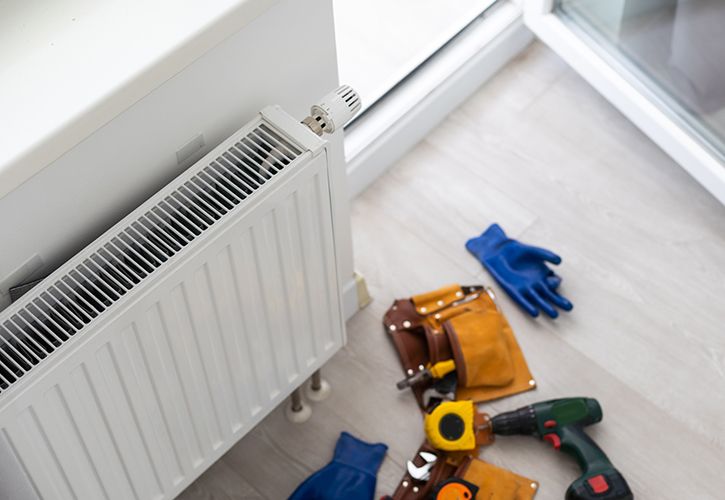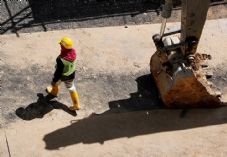UK DIY News
Impact of Reduced Heating on Buildings Amid the Cost of Living Crisis

Property owners across the UK have already felt the bitterness of wintry weather, with parts of the country experiencing up to five successive days of lying snow in November and Storm Bert bringing more snow as well as heavy rain and strong winds to much of the nation.
The UK is still in the grips of the cost of living crisis too. The Energy Price Cap, which controls what the majority of the nation’s households pay for energy, increased by around 10% from £1,568 to £1,717 per year on October 1st 2024. Those rates were set to rise by another 1.2% to £1,738 per year on January 1st, 2025, as well.
One worrying aspect with all of this is that people may be struggling to heat their properties. According to housing expert Richard Moore’s English House Condition Survey, which was reported on by Home Care Insight, 28% of homes across the UK were found to have cold living rooms – spaces with temperatures of 16°C or below – and 44% had cold hallways.
Builder’s merchant and plasterboard supplier Travis Perkins is on hand to advise on how warm a property should be, the consequences that cold temperatures could have on buildings and recommendations for reducing the amount of heat that a house loses…
What temperature should a property be?
As we’ll touch on soon as to the reasons why, it is important that a property is kept warm. However, just what is the correct temperature to aim for?
According to the Centre for Sustainable Energy, between 19°C and 21°C is the recommended range for a daytime temperature that a property’s occupied rooms should be set at. Then at nighttime, the recommended temperature in a bedroom is 18°C.
These room temperatures can be reduced slightly if a property owner is active during the day and then wears appropriate clothing and fits necessary winter bedding at night, but should be used as a marker.
How cold temperatures can damage property
Having a cold property doesn’t just make for uncomfortable living conditions – failing to keep a building warm can also affect its structural integrity and lead to hefty repair bills.
Frozen water pipes can be a problem that many property owners will come across when the temperatures drop and there is heavy snow. Pipes which freeze will disrupt the water supply into a property and can also eventually burst, an issue that can result in water damage and the need for costly plumbing repairs.
A property’s roof can be an area of concern throughout the winter months as well. Heavy snowfall can put a lot of weight onto a roof and cause it to collapse, which can put the whole property at risk.
Then there is the issue of a property’s gutters becoming blocked due to the accumulation of windblown leaves. Gutters which are not regularly cleaned can cause water to leak into a property and even possibly crack foundations.
It is also only natural that many property owners will close off their houses to try and prevent heat from escaping during cold conditions. This can create an environment perfect for mould growth though, which not only affects indoor air quality but can impact the structural integrity of a building too.
How properties lose heat
There is no getting around the fact that all houses will lose heat, with a greater amount of heat lost through parts of a property depending on how cold the temperature is outside and how strong the wind is.
However, an illustration reported on by The Royal Borough of Kensington and Chelsea suggested that a house that is badly insulated can cause:
- Up to 35% of heat to be lost through outside walls.
- Up to 25% of heat to be lost through doors and windows.
- Up to 25% of heat to be lost through the roof.
- Up to 15% of heat to be lost through ground floors.
Ways to reduce how much heat is lost
Getting a property survey is a great place to begin when property owners are looking to improve how much heat remains in a house.
A qualified building surveyor should be sought for this work, as they will be skilled to carry out a thorough inspection and assessment of a property and then provide expert advice about a building’s current structure and any susceptible areas which need addressing.
Skilled tradespeople should also be brought in to carry out these five property improvements:
- Roof insulation – A loft should have a minimum of 270mm of insulation, with care being taken to ensure insulation reaches into the eaves to prevent a ceiling under the loft from developing cold spots.
- Wall insulation – Investing in cavity wall insulation will see insulated materials being injected into a property’s walls to slow the heating process across this part of a house. Properties built before the 1920s will likely have solid walls with no gap though, so cavity wall insulation will not be possible. Solid wall insulation will be required instead, which is a more expensive option. However, work can either be done on the outside or inside of a property, with the energy bill savings larger than those seen from carrying out cavity wall insulation work.
- Window improvements – More heat will be contained inside a property by adding secondary glazing and draught proofing to each window. Reduce the build up of mould, damp and condensation in a house by installing trickle vents onto windows too, as these small openings allow rooms to have a regular flow of fresh air.
- Flooring improvements – Insulate flooring, such as by fitting permeable underlay that will allow moisture to clear or using a thick underlay on a suspended timber floor to reduce how much air comes through floorboards. Underfloor heating could also be considered, to improve the temperature of rooms throughout a property.
- Install extractor fans – These should be fitted within a property’s kitchen and bathrooms to reduce the build-up of moist air. Opt for mechanical extract ventilators too, as these are designed to work automatically when higher humidity levels are detected.
Source : Travis Perkins
Image : Sinenkiy / iStock / 1501145625
Insight DIY is the only source of market information that I need and they always have the latest news before anyone else.











































